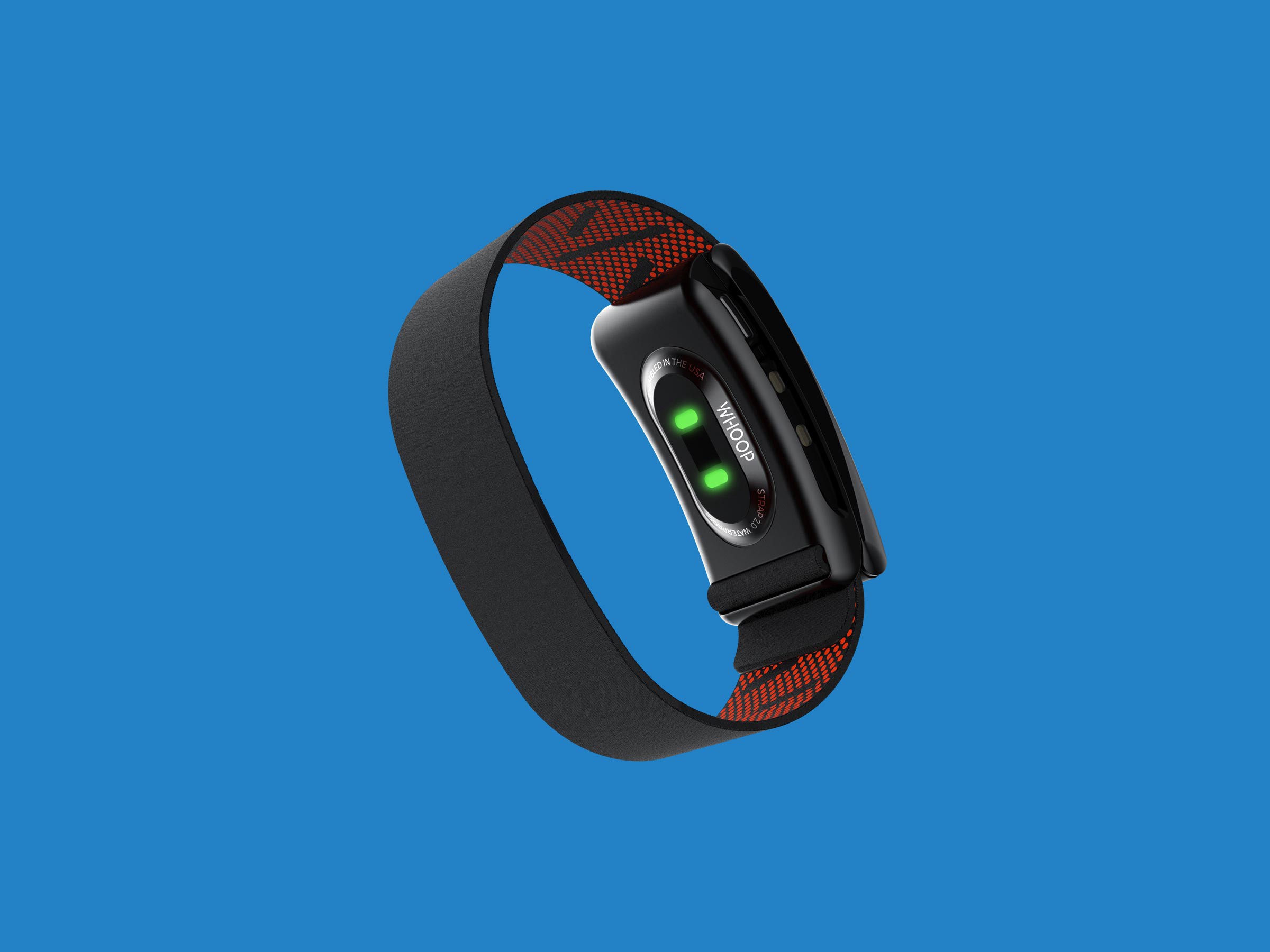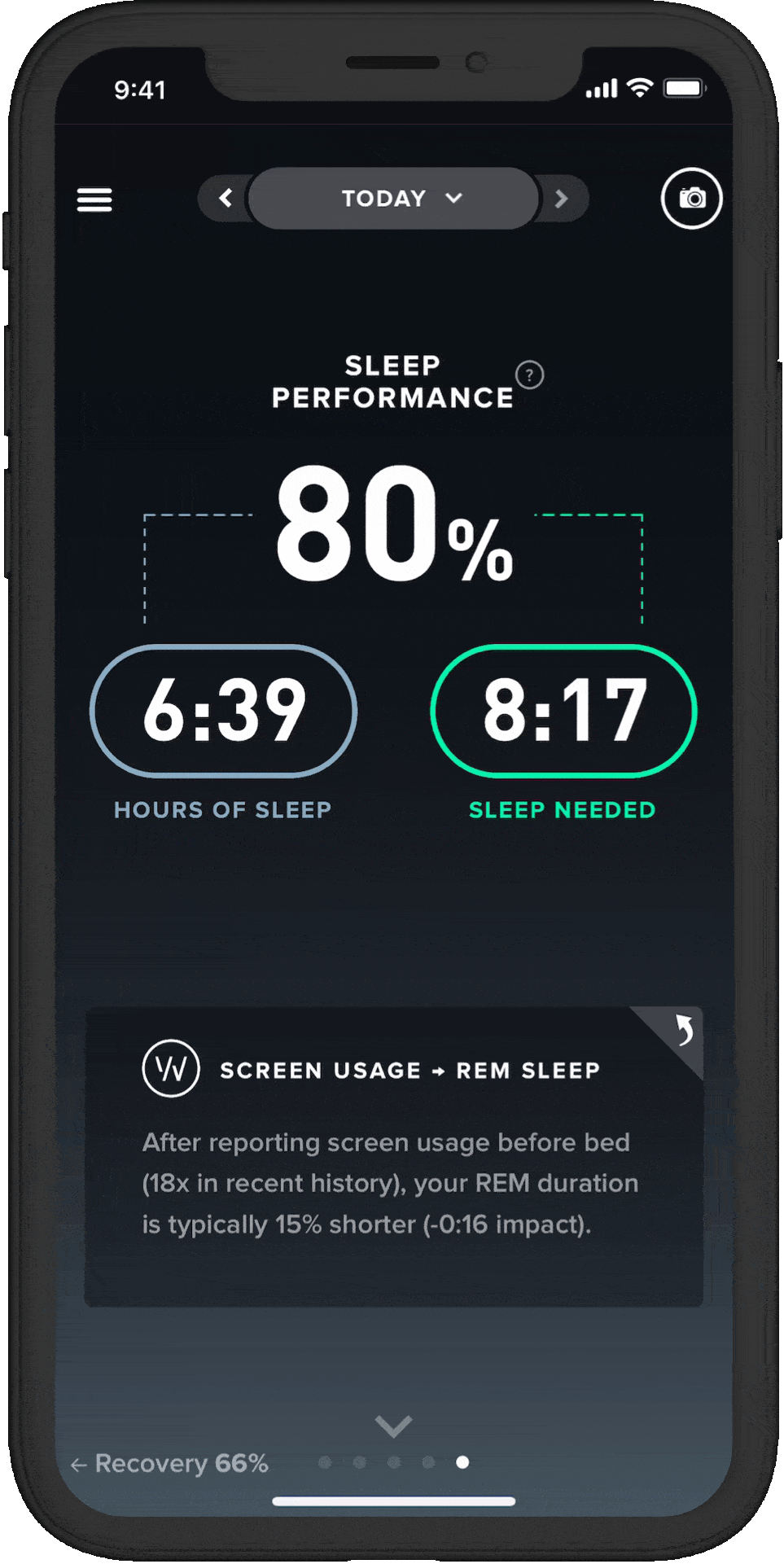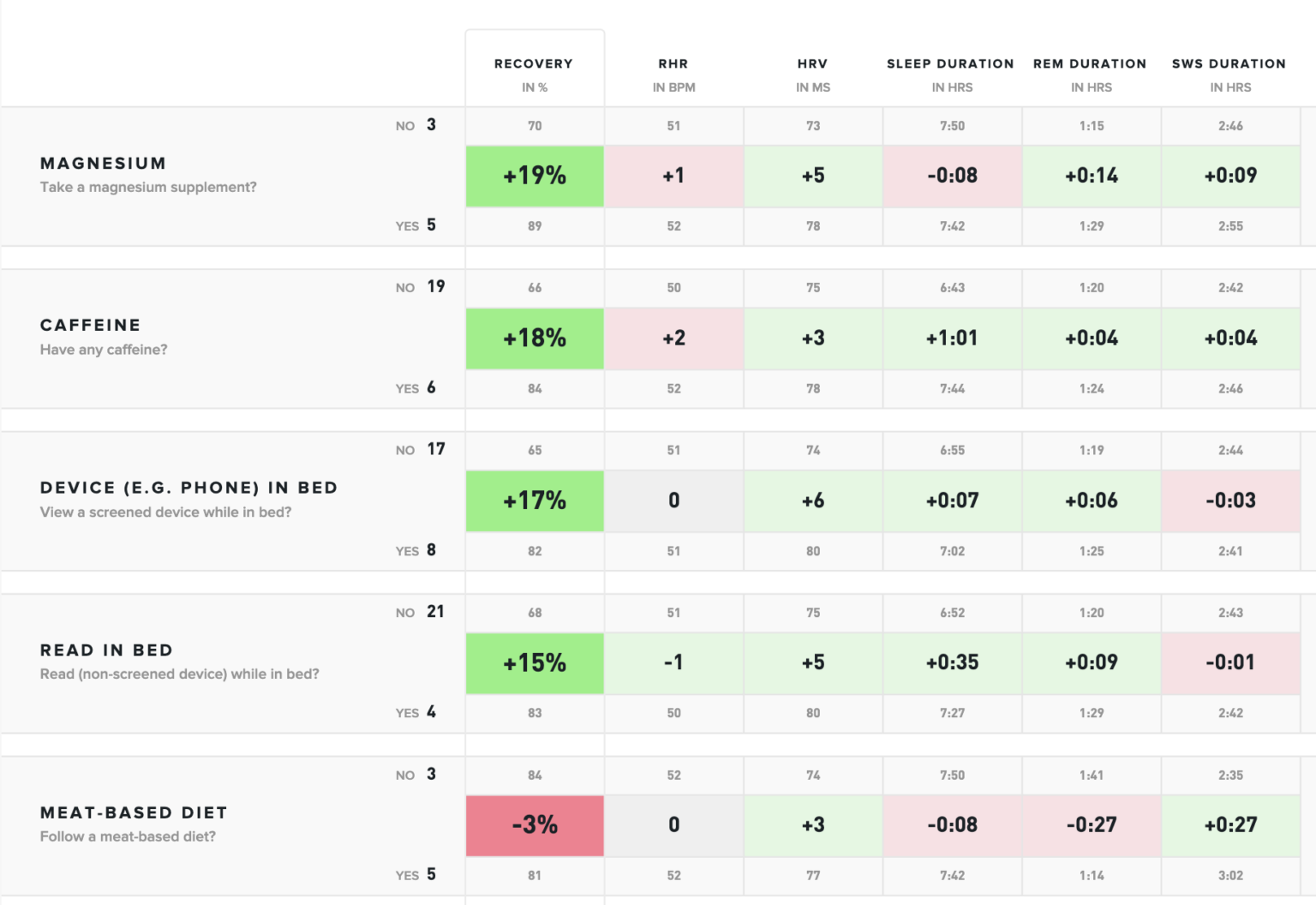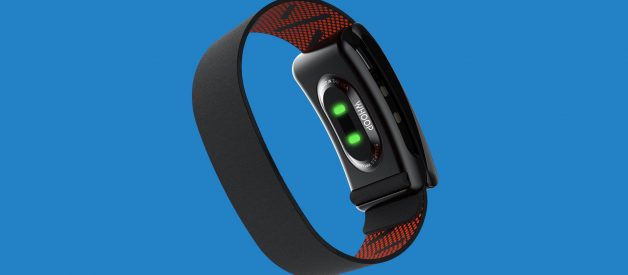 Photo credit: Wired.com
Photo credit: Wired.com
I?ve been hearing lots of whispers in the biohacking space that the best fitness wearable to date is already among us. This device? The Whoop 3.0 strap ? a slick, new tracker designed to be a one stop shop for all your fitness and health data. So does it deliver on this promise? I?ve been testing it out for over a month and I?m excited to share my results and answer some popular questions, like is this band worth the price tag? Is it designed for everyone? And how does it compare to the Oura Ring? Continue reading as I answer all of these questions and more.
So I?ll be breaking down this review into a few different categories:
- Form and functionality
- Metrics
- Accuracy (how it compares to Oura Ring and the Apple Watch devices)
- Pros and cons
To start, let?s take a look at form and functionality. The Whoop band is a very simple strap you wear on your wrist, designed to have a low profile. You won?t find any watch faces or fancy buttons on this thing. It?s waterproof and has a good battery life of 5 days. Plus you never have to take it off because it has an attachable battery pack that you can slide on and off. It?s also a 24/7 activity monitor and to read your data, you have to connect it to their app on your phone. I?d say the band is pretty comfortable, although I did find it left some red marks on my arm (but maybe I was just wearing it too tightly).
In terms of metrics, like many other devices on the market, the Whoop 3.0 tracks:
- Heart rate and Heart Rate Variability (HRV), which are key indications of your stress and fitness levels
- Sleep cycles, including Light, REM, Slow Wave (Deep), and Awake times
- Respiratory rate (the ?breaths per minute? when you sleep). In general, your respiratory rate doesn?t change much; it?s a pretty stable metric. But if you start to see drastic changes in this number, it might give you a clue as to something is up with your health
 Photo credit: Whoop.com
Photo credit: Whoop.com
So what makes the Whoop band so cutting edge? Well, it does have a couple of special functions I haven?t seen with any other trackers, including:
THE STRAIN COACHSo this is really where you get into the nitty gritty of what makes this such a unique fitness device. At the end of each day, you?ll get a total ?strain? number (out of 21). This is basically your total cardio output for the day and includes all of your workouts. This ?strain? number changes from day to day, with a huge emphasis on recovery. For instance, if you intensely worked out for 3 days straight without rest, you?ll start to see your recovery stats go down, which will negatively impact your total daily output. And there?s a good reason for this. The Whoop was designed to help people balance strain with recovery and ensure users are taking time to re-charge each day.
When I used to work at a spin studio, I was taking intense cardio classes every day without breaks. As a result, I was probably doing more harm than good to my body, so a device like this could have been a game changer for me back then.
While working out, the app will also show you in real-time how much ?strain? you?re putting on your body with metrics like calories burned and heart rate zones. Plus, you can adjust the strain coach on the backend to meet your own personal goals. For instance, if you?re training for a marathon or Tough Mudder, you can set higher strain outputs than if you?re just working from home all day. The device is also constantly monitoring your heart rate and HRV data 24/7. So each day, you?ll get a personalized recommendation in the app for how hard to push yourself.

THE SLEEP COACHMuch like the Oura Ring, you?ll find your Light, REM, Deep, and Awake stats in your sleep charts each day. But what?s nice about the sleep coach is that you can actually get nightly recommendations on when to go to bed based on how recovered you want to feel the next day.
For instance, you can choose from I want to ?peak?, ?perform?, or just ?get by? and the app will pump out a number of hours you need that night. Why you would buy this device and just ?want to get by? is beyond me.
Anyway, this recommendation is determined not only by standard metrics for the amount of sleep people need, but it also looks at how you slept that week and how much strain you put on your body that day. Not to mention, sleep is a huge factor in your total recovery score the next day.
THE WHOOP JOURNALThis is the Whoop?s attempt to be a ?catch-all? for any lifestyle changes you make and how they impact your health over time. In the journal on their app, you can select from a list of different behavioral factors you want to log, including things like blue blocking glasses, CBD, late meals, and cryotherapy. As you can tell, they?re really going after the biohacking community. And at the end of each month, you?ll get a summary of how these things made a dent on your sleep and strain goals.
I?ll be honest, I love this journal idea in theory, but from my own personal experience of tracking these types of metrics over time (because I have, in a separate app), it?s really hard to tell if one specific thing is making that much of a difference, except maybe late-night caffeine.
To get a fair assessment of how one of these behaviors is effecting your sleep, you really need to isolate just that one thing for a few weeks. Because if I took Lion?s Mane and magnesium before bed, but I also had a late meal and did an intense workout, I?m not sure which one of those factors played the biggest role. So bottom line: the journal is definitely a cool function, but just be mindful of all your different interactions.
 Whoop Journal, Whoop.com
Whoop Journal, Whoop.com
WEEKLY AND MONTHLY ASSESSMENTS As part of their emphasis on being a ?coaching? tool, the Whoop gives you weekly and monthly assessments reports on three major categories:
- Your training state
- Your sleep status
- Your heart rate variability
What?s great about these assessments features is that you can get a really clear picture of your total health, including insight on your things like your HRV data and how it compares to other people in your same age bracket. But the catch: you have to use this device for at least a month before you can unlock this feature. The Oura also gives you a weekly assessment report. And in theirs, you can isolate certain metrics over time (like your body temperature and deep sleep), which I really find helpful.
 Weekly Performance Assessment, Whoop.com
Weekly Performance Assessment, Whoop.com
ACCURACYSo here?s a direct quote from their website:
?Whoop is currently the only wearable that has validated respiratory rate from a 3rd party, verifying its accuracy.?
So right now, they claim to be at the top for respiratory rate if this is an important metric for you. But in terms of sleep, here?s where we get into some big differences between the Whoop and Oura Ring after one month of data. On the plus side, both trackers were nearly identical when it came to my total sleep and even REM sleep. But I consistently saw big differences of 30 minutes to an hour for deep sleep. So which one is correct? And unfortunately, it?s a little tricky to say. I?m wearing both devices on the same arm and both are tracking HRV while I sleep. But what I do know that is that the Oura ring uses red ppg sensors (a key sensor used for heart rate monitoring) whereas the Whoop uses green ppg sensors. And in general, there are a lot of studies showing red sensors to be more accurate. But I won?t really know for sure until I do a full sleep lab. For activity tracking, I also saw some discrepancies in max heart rate and total calories burn as compared to my Apple Watch.
So before we get to my final thoughts on if you should buy the Whoop, here are my main pros and cons about the device.
THE PROS
- The Whoop is becoming an empire and constantly innovating. Like the Tesla, they?re always rolling out new features left and right so this seems like a great device if you want to stay on top of the latest industry trends.
- There?s a growing community aspect where you can share real-time stats with fellow Whoopers. This is definitely one of the features I enjoyed with my Fitbit because it holds you accountable when you join a team.
- I also appreciated the personalized bedtime reminders and was impressed that it tracked my naps ? something I haven?t been able to do with the Oura.
THE CONS
- I had a lot of connectivity issues with it, which was surprising considering how technologically advanced it seems at first glance. I found it takes a long time to sync up your data for the day and this was frustrating for me.
- Wearing bluetooth on your arm all day and night is not great if you?re concerned about EMFs.
- I didn?t find it was easy to record or monitor workouts in real time. For instance, while running, I couldn?t see how hard I was pushing myself because all of those stats were coming from my phone, which was attached to my arm.
- Also, the Whoop is not going to auto-record certain workouts like yoga or strength training. You actually have to manually enter those after the fact, which is a pain in the neck.
- While the Whoop has a lot going for it, you also have to wear the device for a month before unlocking all its features so that?s basically their way of locking you into the system.
- And I?m definitely not a fan of their pricing model. You have to pay a membership fee to keep tracking your data and this gets expensive over time.
 Photo by Ev on Unsplash
Photo by Ev on Unsplash
FINAL THOUGHTSTo start, I do think this is a great fitness tracker and performance monitor. And I would say that it does indeed deliver on being a one stop shop for a lot of your fitness and health metrics. For someone struggling to stay active, this could be a great tool to keep you motivated and give you daily guidance on how hard to push yourself, especially if you join a team and become part of the ?Whoop community.? And vice versa, I also think this device is great for athletes who might have a tendency to over-train because the Whoop pays very close attention to rest and recovery stats.
But for me personally, I really didn?t utilize the Whoop?s features all that much. I have a pretty solid fitness and sleep routine already and the Whoop didn?t do anything to change those stats. I also found that I prefer tracking my workouts with the Apple Watch simply because it?s easier to press a button and go. And the Oura Ring syncs faster in the morning so I ended up checking that more than the Whoop. I?m also not a fan of the membership system and so this was a big barrier for me to continue using the device. But I encourage readers to check out the device themselves and even report back! They have a 30-day return policy and there?s no time like the current state of affairs to set and track new fitness and sleep goals for yourself.


